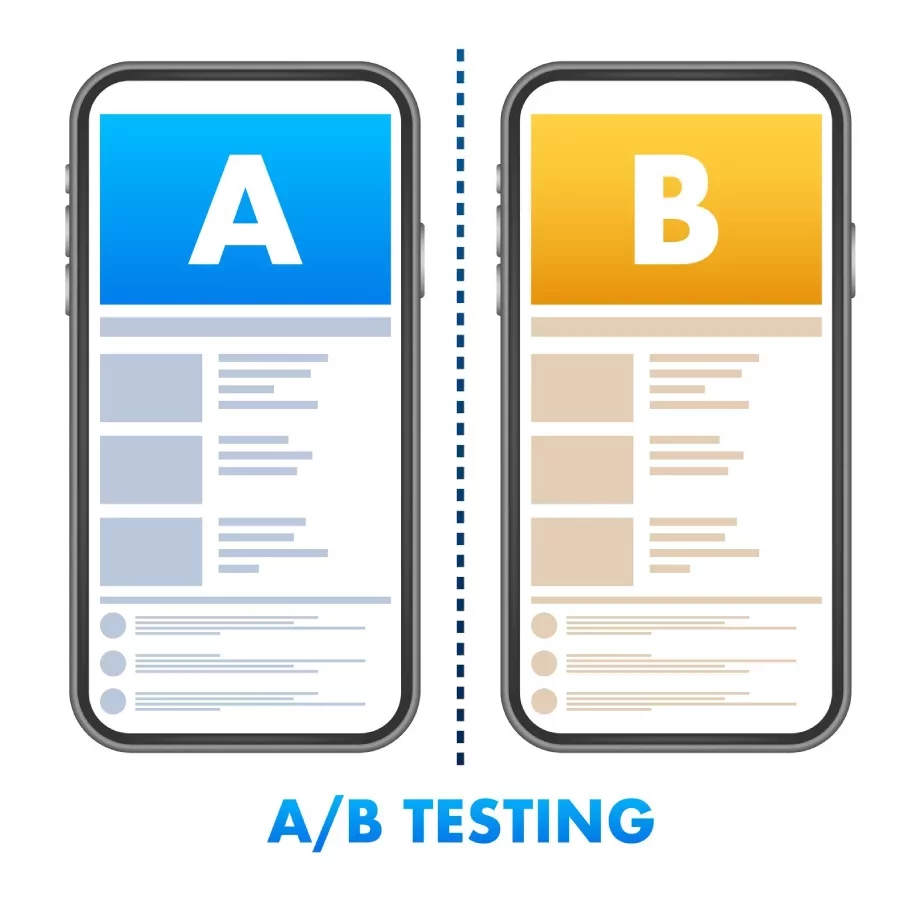Conversion rate optimization (CRO)
Many digital marketers focus on getting clicks and increasing website traffic, thinking that alone ensures success. But in reality, grabbing attention is just the first step in digital marketing and SEO.
The real challenge is turning that traffic into valuable actions—this is where Conversion Rate Optimization (CRO) becomes essential.
CRO is a structured process of testing and improving elements like CTA buttons, page design, content layout, and user flow to boost the percentage of visitors who take a desired action (e.g., purchase, sign-up, contact).
Key benefits of CRO:
-
Boost revenue without increasing traffic
-
Improve user experience and remove conversion barriers
-
Lower customer acquisition cost (CAC)
-
Increase return on ad spend (ROAS)
Quick Access
Metrics and Goals for Conversion Rate Optimization
CRO goals and criteria are different for each brand. Depending on your marketing needs and goals, there are several conversion rate optimization goals you can set for your business, including:
- sale
- Sharing on social networks
- Fill out the form
- Installing the program
- Click on the request action button
- Sign up for the newsletter
Decide what you want to achieve with website conversion rate optimization, understand your audience's needs, and then launch a conversion rate marketing campaign to attract people who take the action you want.


Conversion rate optimization services
Designing and Improving User Experience (UX)
Designing and optimizing user experience is one of the most effective ways to increase conversion rates. UX refers to the feelings, perceptions, and reactions users have when interacting with a website, app, or digital service. A good UX helps users achieve their goals easily and satisfactorily, which directly boosts conversion rates. Effective methods to improve UX and increase conversion rates include:
-
Reducing the number of form fields: Simplifying forms encourages more users to complete them.
-
Responsive design: Ensuring your website displays properly on mobiles, tablets, and desktops.
-
Providing accessible contact and support information: Builds trust and enables easy communication.
-
Using social proof: Displaying user reviews, download counts, trust badges, and notable customers.
-
Clear visibility of call-to-action (CTA) buttons: Strategically placing and designing CTAs prominently on important parts of the page.

The Difference Between SEO and CRO
SEO (Search Engine Optimization): SEO involves activities aimed at improving a website’s ranking in search engine results pages (SERPs). The primary goal is to increase visibility and attract organic traffic.
-
Optimizing content based on keywords
-
Enhancing site structure for better indexing
-
Internal and external linking to increase domain authority
-
Improving site speed and mobile compatibility
CRO (Conversion Rate Optimization): CRO focuses on improving user experience and various website elements to increase the percentage of visitors who take a specific action (purchase, sign up, fill out a form).
-
Optimizing user paths on pages
-
Effective design of CTA buttons
-
Simplifying forms and reducing conversion friction
-
Conducting A/B testing to evaluate options
-
Increasing user engagement and reducing bounce rates

Improving Website Loading Speed
Loading speed is a critical factor in CRO. Users expect web pages to load quickly, and even a few seconds of delay can cause them to leave, resulting in lower conversion rates. Speed optimization not only enhances user satisfaction but also directly increases traffic, engagement, and revenue.
Ways to improve loading speed:
-
Use speed testing tools like Google PageSpeed Insights or Lighthouse to identify bottlenecks
-
Reduce image sizes by using appropriate formats and compression
-
Enable Gzip compression to shrink HTML, CSS, and JavaScript files
-
Utilize caching to load pages faster on repeat visits
-
Minimize HTTP requests by combining CSS and JS files and removing unnecessary scripts
A fast-loading website delivers a better user experience and increases the likelihood of converting visitors into customers.

Form Optimization to Boost Conversion Rates
Optimizing forms makes it easier for visitors to take desired actions like registering or purchasing. To optimize your forms:
-
Reduce the number of fields for quicker completion
-
Write clear and compelling titles and descriptions that explain why users should fill out the form and what benefits they gain
-
Keep the form design simple, professional, and user-friendly
-
Build trust by showing data security assurances or user testimonials
-
Make the call-to-action button clear, attractive, and prominently visible
Using these methods increases the chances of form completion and improves overall conversion rates.

Conduct A/B Testing to Optimize Conversion Rate
A/B testing is a scientific and effective method for conversion rate optimization that allows you to test different versions of web pages or elements to determine which variant achieves a higher conversion rate. This approach enables you to carefully analyze user behavior and make data-driven decisions. Steps to Perform A/B Testing:
-
Collect and analyze data using tools like Google Analytics to identify weak points
-
Define an improvement hypothesis based on data and user feedback
-
Design two versions: Version A (current) and Version B (modified)
-
Run the test simultaneously, showing each version to random visitor groups
-
Measure and analyze results using conversion rate metrics and statistical methods
-
Implement changes permanently on the winning version
Importance of A/B Testing: A/B testing helps you make decisions based on real data instead of guesses, significantly boosting your conversion rate, improving user experience, reducing bounce rates, and increasing sales.

Data Analysis in Conversion Rate Optimization
Data analysis is a crucial part of CRO that lets you identify conversion barriers by understanding user behavior, needs, and challenges—and increase your conversion rate by addressing them.
Why Data Analysis Matters:
-
Gain accurate insights into user behavior and interactions
-
Identify obstacles blocking conversions
-
Prioritize changes based on actual data
Useful Tools for Data Analysis:
-
Google Analytics: Analyze user behavior and conversion paths
-
SurveyMonkey: Collect user feedback
-
Hotjar: Analyze heatmaps and user behavior
By using these tools and interpreting data correctly, you can enhance your conversion optimization strategy effectively.

Improve Content to Increase Conversion Rate
Content improvement is one of the most powerful CRO techniques to encourage more visitors to take your desired action. High-quality, targeted content clearly communicates your value proposition, builds user trust, and removes objections.
Key Techniques for Content Improvement:
-
Use compelling headlines and clear descriptions to capture your audience’s attention
-
Incorporate high-quality photos and videos to boost visual appeal
-
Produce smooth, simple, and easy-to-understand text to convey your message effectively
Focusing on enhancing and tailoring your content to your audience’s needs can significantly increase your website’s conversion rate and improve the ROI of your digital marketing efforts.

Benefits of Conversion Rate Optimization for Online Businesses
Conversion Rate Optimization (CRO) is a vital strategy for improving the performance and profitability of online businesses. Here are some of its key advantages:
-
Increase User Engagement: CRO helps visitors connect better with your content and calls to action, increasing the likelihood of converting them into customers.
-
Higher Return on Investment (ROI): Improving your conversion rate means earning more profit from each visitor or ad spend, reducing customer acquisition costs, and maximizing your ROI.
-
More Accurate User Insights: Data analysis tools provide a better understanding of user behavior, needs, and conversion barriers, allowing you to craft more precise strategies.
-
Build Customer Trust: Enhancing your site’s design, content, security, and displaying social proof increases brand trust, leading to more collaboration, purchases, and word-of-mouth referrals.
-
Business Scalability: CRO enables you to leverage existing traffic to gain more customers without increasing acquisition costs, helping you control expenses and stay ahead of competitors.

Conversion rate optimization steps
1
research
Collect and analyze quantitative and qualitative data about visitors, their behavior, needs and problems
2
hypothesis
Presenting the hypothesis in a specific and measurable way based on the data collected in the previous step to improve the conversion rate
3
prioritize
Prioritizing the hypotheses based on the impact on the conversion rate using different methods
4
test
Hypothesis testing using laboratory methods such as A/B test, split test or multivariate test
5
analyze
Analyzing the results of the tests to check the rejection or confirmation of the hypothesis presented to improve the conversion rate


Add a comment
Your email address will not be published. Required fields are marked.